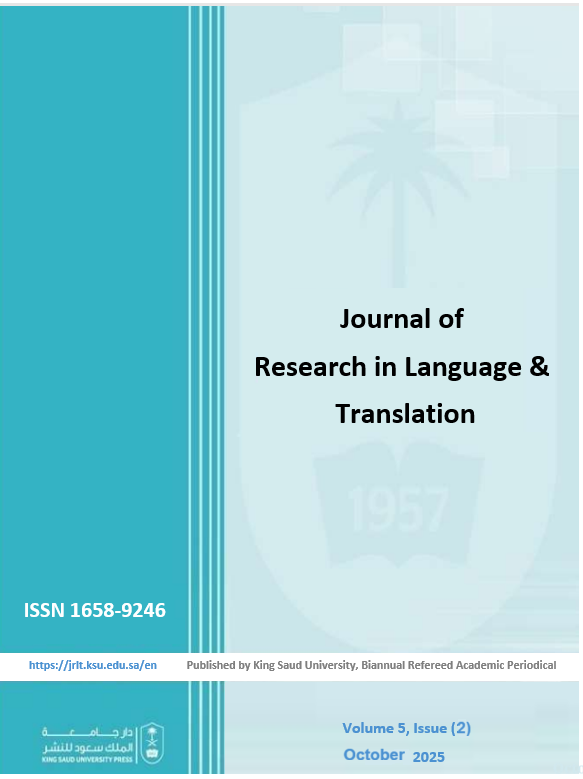The Interplay of Globalization, Localization, and Translation in Shaping the Linguistic Landscape of Saudi Arabia
DOI:
https://doi.org/10.33948/JRLT-KSU-5-2-8Keywords:
linguistic landscape, globalization, localization, translation/transliteration, Saudi ArabiaAbstract
This study investigates the dynamic interplay of globalization, localization, and translation within Saudi Arabia’s linguistic landscape (LL), focusing on commercial signage in cities like Riyadh, Jeddah, and Abha. It aims to explore how translation practices influence language use in public spaces, affecting cultural representation and accessibility. The study highlights how Saudi Arabia balances global influences with its cultural identity in alignment with Saudi Vision 2030. This is demonstrated through the analysis of translation patterns such as direct translations, transliterations, and hybrid language signs. The methodology combines an LL approach with semiotic and thematic analysis to assess over 300 shop signs. Shop sign data were categorized into five translation patterns: direct translation, English-to-Arabic transliteration, Arabic-to-English transliteration, English-only signage, and mixed-language signs. The study also evaluates relevant language policies, including the guidelines under Saudi Vision 2030, to contextualize the findings within Saudi Arabia’s broader goals of cultural preservation and modernization. The findings indicate that English-to-Arabic transliteration and direct translation are the most commonly used patterns in shop signs, comprising over 70% of the total. The other three categories appear far less common. English-to-Arabic transliteration is identified as a key tool for reconciling globalization and localization, allowing international brands to retain their phonetic identity while making them accessible to Arabic speakers. This practice reflects Saudi Arabia’s approach to modernizing without compromising its cultural heritage. Moreover, the research offers insights into how translational practices in the LL serve not only functional purposes but also ideological ones, symbolizing a Saudi identity that embraces global engagement while preserving its local roots. These findings can inform policymakers, business stakeholders, and researchers in developing strategies that support both cultural integrity and global accessibility in Saudi public spaces.

